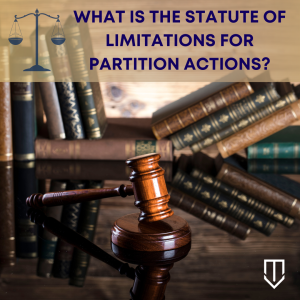 An action for accounting is an equitable action seeking to determine the amount owed to the parties of an action when damages are uncertain. “An accounting is an equitable proceeding which is proper where there is an unliquidated and unascertained amount owing that cannot be determined without an examination of the debits and credits on the books to determine what is due and owing.” (Prakashpalan v. Engstrom, Lipscomb & Lack (2014) 223 Cal.App.4th 1105, 1136-1137, 167 Cal.Rptr.3d 382.) Therefore, when asserting an accounting action, equitable principles apply.
An action for accounting is an equitable action seeking to determine the amount owed to the parties of an action when damages are uncertain. “An accounting is an equitable proceeding which is proper where there is an unliquidated and unascertained amount owing that cannot be determined without an examination of the debits and credits on the books to determine what is due and owing.” (Prakashpalan v. Engstrom, Lipscomb & Lack (2014) 223 Cal.App.4th 1105, 1136-1137, 167 Cal.Rptr.3d 382.) Therefore, when asserting an accounting action, equitable principles apply.
In order to prevail on an accounting claim, a party must prove the existence of a relationship and that an uncertain balance is owed to the plaintiff, which requires an accounting. At the Underwood Law Firm, our attorneys are more than familiar with accounting actions.
 California Partition Law Blog
California Partition Law Blog


 A
A  A deed of trust is a commonly used mortgage document in California. Essentially, a deed of trust provides a lender with security for the repayment of the loan and effectively functions
A deed of trust is a commonly used mortgage document in California. Essentially, a deed of trust provides a lender with security for the repayment of the loan and effectively functions  A “TIC” Agreement is a contractual agreement between tenants in common to real property. Because each tenant in common is a co-owner of the property, these agreements can help spell out the rights of each, preventing future disputes over payment or occupation. And, if the dispute cannot be prevented, the agreement, acting as a binding contract, provides a clear guideline for a judge to use in a court action, ensuring that the lawsuit moves along as quickly as possible.
A “TIC” Agreement is a contractual agreement between tenants in common to real property. Because each tenant in common is a co-owner of the property, these agreements can help spell out the rights of each, preventing future disputes over payment or occupation. And, if the dispute cannot be prevented, the agreement, acting as a binding contract, provides a clear guideline for a judge to use in a court action, ensuring that the lawsuit moves along as quickly as possible. 
 A motion to determine title is a motion to the court requesting that the court establish title to a piece of real property. Typically, a motion to determine title shows up in the court as a quiet title action. A quiet title action is brought when a litigant seeks to establish that they have an ownership interest in the subject property and refute any adverse claims against the litigant. It follows that to prevail on a motion to determine title; one must show that they hold some ownership interest in the subject property.
A motion to determine title is a motion to the court requesting that the court establish title to a piece of real property. Typically, a motion to determine title shows up in the court as a quiet title action. A quiet title action is brought when a litigant seeks to establish that they have an ownership interest in the subject property and refute any adverse claims against the litigant. It follows that to prevail on a motion to determine title; one must show that they hold some ownership interest in the subject property.  Yes, but only in specific circumstances. When thinking of lawsuits, most people associate them with individuals. John may sue Mary for battery, for example. But this isn’t always the case. A large part of the law is devoted to virtual representation because some people, like minors, simply cannot file suit.
Yes, but only in specific circumstances. When thinking of lawsuits, most people associate them with individuals. John may sue Mary for battery, for example. But this isn’t always the case. A large part of the law is devoted to virtual representation because some people, like minors, simply cannot file suit.  Co-ownership of property brings with it many rights and duties under the law. These rights and duties can vary depending on whether co-owners hold property as
Co-ownership of property brings with it many rights and duties under the law. These rights and duties can vary depending on whether co-owners hold property as  In most cases, no. Instead, the statute of limitations most frequently bars a partition action when a party’s rights to the property have lapsed due to an ouster.
In most cases, no. Instead, the statute of limitations most frequently bars a partition action when a party’s rights to the property have lapsed due to an ouster.  “Joint tenancy” is a phrase that most people associate with the co-ownership of a property. And indeed, this is correct. Joint tenancy is a form of co-ownership in California, second only to
“Joint tenancy” is a phrase that most people associate with the co-ownership of a property. And indeed, this is correct. Joint tenancy is a form of co-ownership in California, second only to